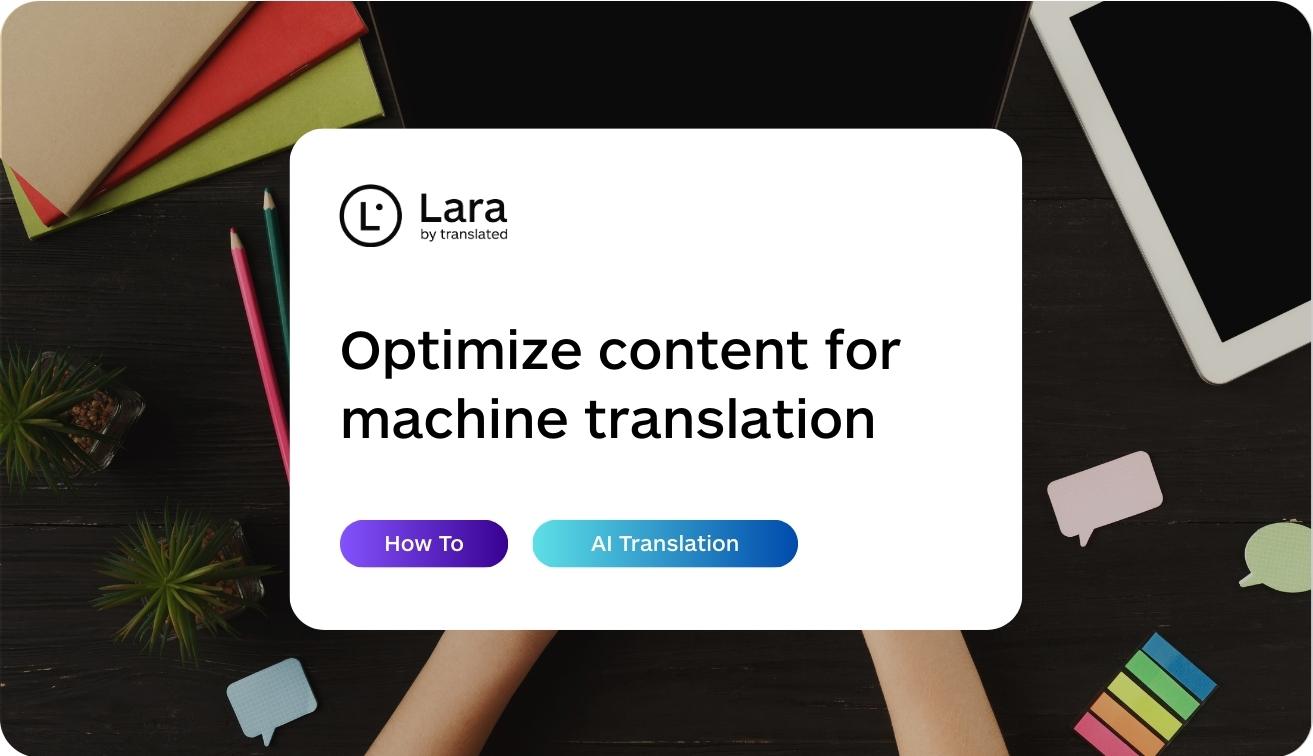In today’s globalized world, effective communication across language barriers is essential for businesses and content creators looking to expand their reach. Machine translation has revolutionized how we approach multilingual content, but the quality of output depends heavily on how your source content is prepared. Learning to optimize content for machine translation isn’t just about avoiding embarrassing mistakes—it’s about creating clear, effective messaging that resonates with global audiences.
Why source content quality matters for translation
Before diving into specific strategies, it’s important to understand that machine translation follows the “garbage in, garbage out” principle. Even the most advanced neural machine translation systems struggle with ambiguous, overly complex, or poorly structured content. By implementing machine translation content tips from the outset, you can dramatically improve results while reducing the need for extensive post-editing.
The way you write for machine translation directly impacts:
- Translation accuracy and meaning preservation
- Natural-sounding output in target languages
- Consistency across all translated materials
- Time and resources spent on post-editing
- Overall effectiveness of your global communication strategy

Smart strategies to prepare content for machine translation
Optimizing your content before translation isn’t about dumbing it down—it’s about making it clearer and more effective for both human and machine readers. Here are proven approaches to machine translation content optimization that will help you achieve better results.
Use clear, concise language
Writing in a direct, straightforward style is fundamental when preparing content for machine translation. Simplifying text for translation doesn’t mean sacrificing sophistication—it means communicating with clarity.
- Keep sentences relatively short (15-20 words is often ideal)
- Use active voice instead of passive constructions
- Avoid idioms, slang, and culturally specific references
- Eliminate unnecessary jargon and technical terminology unless essential
- Be explicit rather than implicit with your meaning
For example, instead of writing “The ball was thrown by John,” use “John threw the ball.” This simple shift to active voice creates clearer subject-verb-object patterns that translation engines can process more effectively.
Maintain consistent terminology
Inconsistent terminology confuses both human readers and machine translation systems. Develop and follow a glossary of preferred terms, especially for product names, technical concepts, and industry-specific language. This controlled language approach ensures that your key terms are consistently translated across all your content.
For instance, if you alternate between referring to your product as a “client portal,” “customer dashboard,” and “user interface,” machine translation may use different terms in the target language, creating confusion for readers. Pick one term and use it consistently.

Structure content logically
Well-structured content provides important context that helps translation engines understand the relationships between ideas. When you’re writing best practices for MT, consider how your content is organized:
- Use descriptive headings and subheadings that clearly indicate content sections
- Organize information in a logical sequence
- Break up long paragraphs into shorter ones with a single main idea
- Use bullet points and numbered lists for series of items
- Ensure pronouns have clear antecedents
This structural clarity not only improves machine-readable content creation but also makes your original content more accessible to all readers.
Provide context for ambiguous terms
Many words have multiple meanings depending on context. Without sufficient context, machine translation might choose the wrong interpretation. When writing, be aware of potential ambiguities and provide clarifying context where needed.
For example, the word “book” could be a noun (a publication) or a verb (to reserve something). A sentence like “I need to book it” could be translated incorrectly without context. Adding specificity—”I need to book the hotel room”—helps the machine translation system choose the correct meaning.
Optimize for specific language pairs
Different language pairs present unique challenges for machine translation. When possible, tailor your content guidelines for MT based on the specific target languages you’re working with.
For instance, if translating from English to Japanese, be aware that subjects are often implied rather than stated in Japanese. Being explicit about subjects in your English source can help improve the final translation. Similarly, languages with grammatical gender may require clarity about whether you’re referring to people or objects.
How Lara Translate enhances machine translation quality
While optimizing your source content is crucial, the translation technology you choose also plays a vital role in output quality. Lara Translate stands out from conventional machine translation tools through its innovative approach to contextual understanding.
Powered by advanced neural machine translation technology, Lara Translate’s Model Context Protocol (MCP) server delivers superior translations by maintaining context throughout the translation process. This technology not only captures the meaning of individual words and phrases but understands how they relate to the broader message, producing translations that sound natural and preserve your original intent.
Lara’s expanding language support now covering many languages with plans to reach 62 by June 2025—makes it an ideal solution for businesses with global ambitions. The platform’s exceptional speed (completing 99% of translations in just 1.2 seconds) and contextual accuracy allow content creators to scale internationally without sacrificing quality or waiting for lengthy translation processes.
Technical considerations for machine translation
Beyond linguistic optimization, there are several technical aspects of improving MT output quality that deserve attention.
Format and tag management
When working with formatted content or content containing HTML/XML tags, ensure that:
- Tags are properly closed and nested
- Special characters are correctly encoded
- Placeholders for variables follow a consistent format
- Content is properly segmented with clear sentence boundaries
Translation engines need to know which parts of the content should be translated and which should remain unchanged (like code, variables, or brand names). Proper formatting helps maintain the structural integrity of your content through the translation process.
Be mindful of character expansion
Many languages require more characters than English to express the same idea. For instance, translations from English to German or Romance languages typically expand by 15-30%. This translatability consideration is especially important for:
- User interface elements with space constraints
- Buttons and call-to-action elements
- Headlines and titles with strict character limits
- Mobile applications where screen real estate is limited
Design your content with this potential expansion in mind, allowing sufficient space in layouts and avoiding overly tight character restrictions.

Post-translation quality assurance
Even with perfectly optimized source content, MT post-editing remains an important step for professional-quality translations. Here’s how to approach this stage effectively:
- Use a standardized quality assessment framework like MQM (Multidimensional Quality Metrics)
- Prioritize errors that affect meaning over stylistic preferences
- Maintain a post-editing guide with specific rules for each language
- Create feedback loops where post-editors can suggest improvements to source content
- Track common errors to identify patterns that could be addressed in source optimization
Conclusion
Optimizing content for machine translation is about much more than avoiding mistakes—it’s about creating content that truly communicates across linguistic and cultural boundaries. By following these writing best practices for MT, you’ll not only improve translation quality but also enhance the clarity and effectiveness of your original content.
Remember that machine translation is a powerful tool, but it requires thoughtful preparation to deliver its full potential. As you implement these strategies, you’ll see gradual improvements in translation quality, consistency, and the overall impact of your global communications.
FAQ: Optimizing Content for Machine Translation
Does controlled language affect all machine translation systems equally?
No. Clear writing for translation and controlled language have varying impacts depending on the machine translation system. Rules-based and statistical machine translation systems benefit significantly from controlled language, while neural machine translation systems are somewhat more forgiving of linguistic variation. However, all systems perform better with clear, well-structured source content.
How much should I simplify my content for machine translation?
The goal isn’t to create overly simplistic content, but rather to eliminate unnecessary complexity. Focus on simplifying text for translation by removing ambiguity and structural complexity while maintaining your brand voice and the sophisticated ideas you want to convey.
Is it worth creating separate content for translation versus domestic audiences?
In most cases, no. Rather than creating separate content streams, which increases workload and can create consistency issues, focus on creating one set of content that follows machine translation content optimization best practices. This approach improves clarity for all audiences while ensuring translatability.
How do I balance SEO requirements with translation optimization?
SEO best practices often align well with machine translation requirements. Both prioritize clarity and well-structured content. When conflicts arise, consider creating landing pages specifically optimized for local SEO in each target market rather than compromising the translatability of your primary content.
This article is about:
- Strategies for writing and structuring content to optimize machine translation quality and minimize post-editing
- How to write for MT while maintaining brand voice and sophisticated messaging
- Technical considerations such as formatting and character expansion to enhance translation output
- The role of Lara Translate and post-editing in delivering high-quality, machine-assisted translations





